Easter Heath Escallonia bifida

ABOUT
The plant, commonly known as Escallonia bifida, presents itself with a bushy growth habit, rich in dense evergreen foliage. The leaves provide a glossy, dark green background, each one small and oval-shaped with finely serrated edges, giving the plant a lush, textured appearance. Throughout the blooming period, Escallonia bifida becomes adorned with an abundance of flowers. These blossoms are usually white, with a delicate, bell-shaped form, hanging in clusters and creating a striking contrast against the dark foliage. The multitude of flowers not only adds a decorative flair to the plant but also attracts various pollinators such as bees and butterflies, adding dynamism to its presence. The overall aesthetic of the plant is one of robust vitality and charming floral display, making it an attractive choice for gardeners looking to add evergreen structure and seasonal interest to their landscapes.
About this plant
 Names
NamesFamily
Escalloniaceae.
Synonyms
Pale Pink Escallonia, Thorne's Escallonia.
Common names
Escallonia bifida.
 Toxicity
ToxicityTo humans
Escallonia bifida, commonly known as the Pale Escallonia, is not widely recognized as a poisonous plant to humans. There is limited information available on its toxicity, and it is not commonly reported to cause harm when touched or ingested. However, as with any plant, some individuals might experience an allergic reaction or mild irritation upon contact with its sap, or gastrointestinal discomfort if ingested in large quantities. If you suspect poisoning from any plant, it is important to seek medical advice.
To pets
Pale Escallonia is not known to be toxic to pets. There is a lack of substantial evidence indicating that Escallonia bifida poses a risk if pets happen to ingest parts of this plant. Nevertheless, it is always best to prevent pets from eating plants as ingestion could sometimes result in mild gastrointestinal upset due to the novelty and fiber content, rather than toxicity. If you notice any unusual symptoms in your pet after ingesting this plant, it is prudent to contact a veterinarian.
 Characteristics
CharacteristicsLife cycle
Perennials
Foliage type
Evergreen
Color of leaves
Green
Flower color
White
Height
8 feet (2.44 meters)
Spread
6 feet (1.83 meters)
Plant type
Shrub
Hardiness zones
7
Native area
South America
Benefits
 General Benefits
General Benefits- Ornamental Appeal: Escallonia bifida, commonly known as Pale Pink Escallonia, is valued for its attractive foliage and pale pink flowers, enhancing the aesthetic of gardens and landscapes.
- Wildlife Attraction: The flowers of Pale Pink Escallonia attract beneficial pollinators such as bees and butterflies, supporting biodiversity.
- Privacy Screen: With its bushy growth habit, this plant can be used to create natural privacy screens or hedges.
- Windbreak: Its dense foliage can serve as a windbreak, providing shelter from prevailing winds in exposed or coastal areas.
- Erosion Control: The plant's root system helps stabilize soil and prevent erosion on slopes and banks.
- Low Maintenance: Pale Pink Escallonia is a low-maintenance plant that generally requires minimal care once established.
- Drought Tolerance: Once established, it is relatively drought-tolerant, making it suitable for xeriscaping or gardens in drier climates.
- Tolerance to Salt Spray: Escallonia bifida is tolerant of salt spray, making it ideal for coastal gardens.
 Medical Properties
Medical PropertiesThis plant is not used for medical purposes.
 Air-purifying Qualities
Air-purifying QualitiesThis plant is not specifically known for air purifying qualities.
 Other Uses
Other Uses- Insect Attractant: Escallonia bifida can be used in gardens to attract pollinators such as bees and butterflies, helping to improve the pollination of nearby plants.
- Windbreak: Due to its dense foliage, Escallonia bifida can be planted in rows to serve as a windbreak, protecting other plants and reducing soil erosion.
- Privacy Screen: The thick growth habit of Escallonia bifida makes it ideal for creating a natural privacy screen in gardens and landscaped areas.
- Erosion Control: Its root system helps stabilize slopes and banks, preventing erosion and loss of soil in vulnerable areas.
- Hedge Plant: Escallonia bifida can be shaped and maintained as a formal hedge, providing structure to garden designs.
- Noise Barrier: The plant's dense growth can help absorb sound, thereby reducing noise pollution in residential and urban settings.
- Ornamental Bonsai: The bushy nature and small leaves of Escallonia bifida make it a candidate for bonsai cultivation.
- Culinary Garnish: Although not commonly used for consumption, the flowers can sometimes be used as a decorative garnish for certain dishes.
- Floral Arrangements: The attractive blooms of Escallonia bifida can be cut and used in floral arrangements, adding a splash of color to bouquets.
- Photographic Subject: With its beautiful flowers, Escallonia bifida can be a favorite among photographers looking to capture the aesthetics of nature.
Interesting Facts
 Feng Shui
Feng ShuiThe Escallonia is not used in Feng Shui practice.
 Zodiac Sign Compitability
Zodiac Sign CompitabilityThe Escallonia is not used in astrology practice.
 Plant Symbolism
Plant Symbolism- Harmony: The balanced growth and evergreen nature of Escallonia signify harmony in one's life.
- Protection: Its dense foliage is often considered a symbol of shelter and protection against negative forces.
- Adaptability: Escallonia's ability to thrive in coastal environments represents resilience and adaptability to various circumstances.
- Beauty: With its attractive flowers, Escallonia symbolizes beauty and aesthetics, reflecting the joy and pleasure in appreciating the natural world.
- Healing: Some cultures may associate the plant's medicinal properties with healing and restoration of health.
 Water
WaterFor Escallonia bifida, commonly known as 'Pale Escallonia', water the plant deeply and thoroughly to ensure that the moisture reaches the root zone. During the growing season, watering should be done approximately every 7 to 10 days, depending on weather conditions. Always check the top inch of soil for dryness before watering; if it is dry, it’s time to water. Pale Escallonia prefers consistent moisture, but do not overwater as this can lead to root rot. As a general rule, aim for about 1 to 1.5 gallons per watering, adjusting as needed for your climate and the plant's responsiveness.
 Light
LightPale Escallonia thrives best in full sun to partial shade conditions. The ideal location for the plant is where it receives at least 6 hours of direct sunlight daily but is protected from the intense midday heat, which could scorch the leaves. Spots that get morning sun and afternoon shade, or dappled light, are often ideal for Pale Escallonia.
 Temperature
TemperaturePale Escallonia prefers moderate temperature conditions and can handle a range between about 20°F and 90°F. The ideal temperature for optimal growth of Pale Escallonia is between 60°F and 75°F. While the plant can survive occasional dips in temperature, extended exposure to cold below 20°F may damage or kill the plant.
 Pruning
PruningPruning Pale Escallonia is essential to maintain its shape, encourage bushier growth, and improve air circulation. Prune in late winter or early spring before new growth starts, by removing dead or damaged branches and shaping the plant as desired. Pruning can be done annually, and after flowering, light pruning can encourage a second bloom in the same year.
 Cleaning
CleaningAs needed
 Soil
SoilEscallonia, commonly known as Escallonia, thrives best in well-draining soil enriched with organic matter and a pH of 5.5 to 6.5. A good mix would be consisting of two parts garden soil, one part peat moss or well-rotted compost, and one part perlite or sand to improve drainage.
 Repotting
RepottingEscallonias should be repotted every 2-3 years or when the roots outgrow the current pot, using fresh soil to replenish nutrients and encourage continued growth.
 Humidity & Misting
Humidity & MistingEscallonias prefer moderate humidity levels but are quite adaptable to different humidity conditions, making them suitable for most average home environments.
 Suitable locations
Suitable locationsIndoor
Provide bright light and well-draining soil for Escallonia indoors.
Outdoor
Plant Escallonia in sun to partial shade, water well.
Hardiness zone
7-10 USDA
 Life cycle
Life cycleEscallonia bifida, commonly known as Pale Escallonia, begins its life cycle as a seed, which under appropriate conditions of moisture and temperature will germinate and develop into a seedling. This seedling stage is characterized by the emergence of the plant's first leaves as it establishes a root system. As the plant grows, it enters a vegetative stage, producing a woody stem and more leaves, focusing on accumulating resources and growth. Following vegetative growth, Pale Escallonia enters the reproductive stage, flowering in the summer with clusters of small, tubular, pale pink to white flowers which attract pollinators. After successful pollination, the flowers develop into small capsules containing seeds. The life cycle is completed when these seeds are dispersed by wind or fauna, leading to the potential establishment of new plants.
 Propogation
PropogationPropogation time
Spring-Early Summer
The most popular method of propagation for Escallonia bifida, commonly known as the Pale Pink Escallonia, is through semi-ripe cuttings. This technique is typically done in late summer. To propagate, cut a 4 to 6 inch (10 to 15 cm) length of stem that includes a piece of the current year's growth which has started to firm up but is not yet completely woody. The lower leaves should be removed and the cut end dipped in rooting hormone to enhance root production. The cutting should then be planted in a well-drained soil mix, preferably in a pot, and placed in a sheltered location with indirect light. It's important to maintain humidity around the cutting, often achieved by covering the pot with a plastic bag or placing it in a propagator. Roots usually develop within several weeks, after which the new Escallonia plants can eventually be transplanted to their desired location in the garden.
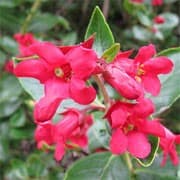
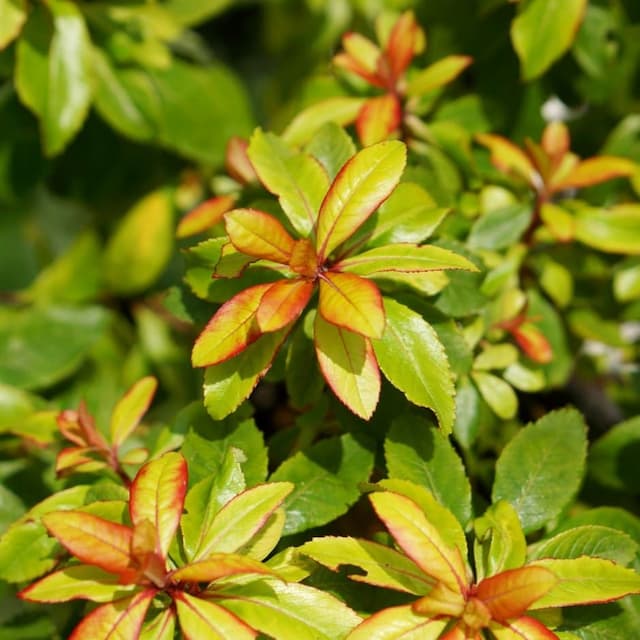

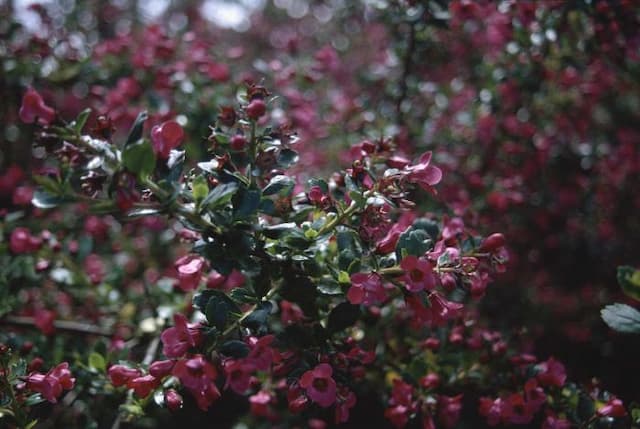
![Escallonia [Golden Carpet]](/_next/image?url=https%3A%2F%2Fplants-admin.emdemapps.com%2Fimages%2Fplants%2F%2Fimages%2F604b59284be41.png&w=640&q=75)
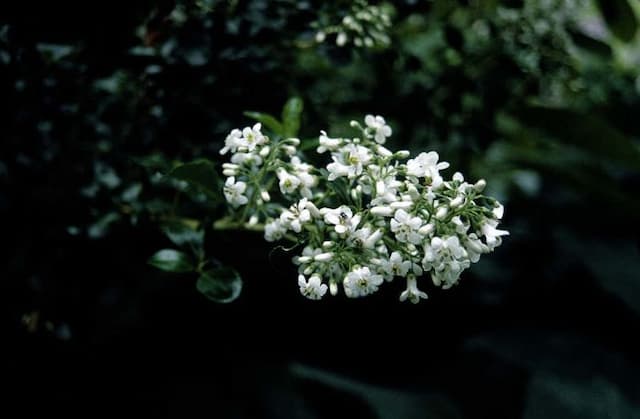
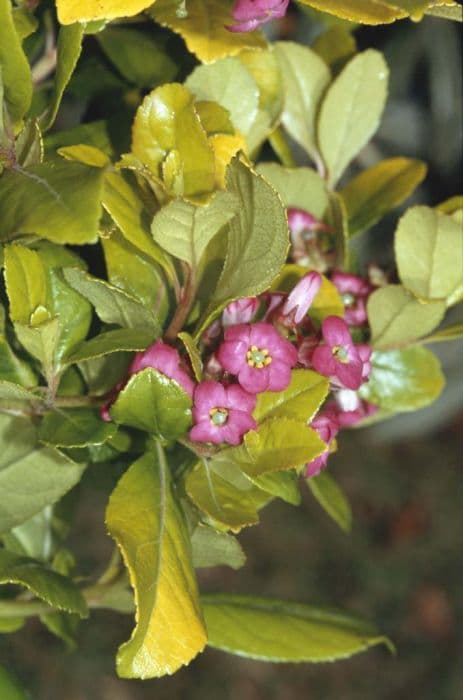
![Escallonia [Pink Elle]](/_next/image?url=https%3A%2F%2Fplants-admin.emdemapps.com%2Fimages%2Fplants%2F%2Fimages%2F604b630962bc2.png&w=640&q=75)

